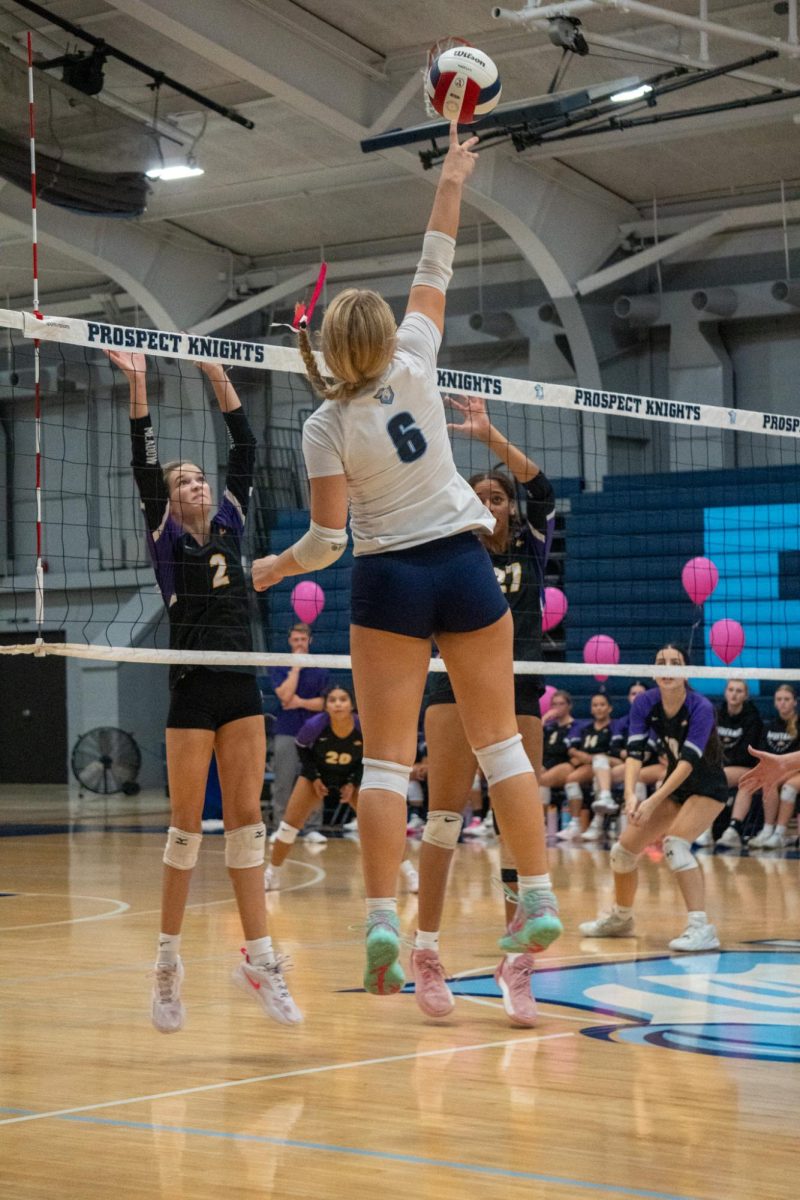By Aungelina Dahm
Executive Sports Editor
One thing that can come to mind when someone says lacrosse is that last scene in “Mean Girls” when Regina George decides to channel her anger in a positive way by joining the lacrosse team after The Plastics split up at the end of the year.
Another snippet of lacrosse was that first scene in Pocahontas when a pair of Native Americans were playing the sport before the Europeans arrived.
That is so fetch.
Lacrosse, said to be America’s first sport, is the fastest growing sports in the United States, according to uslacrosse.org. Youth membership (ages 15 and under) has more than quadrupled since 1999 from 40,000 to nearly 200,000. There has not been a sport that has grown faster at the high school level in the past 10 years; there are now an estimated 169,000 high school players.
According to the Illinois High School Lacrosse Association (IHSLA), there are currently 79 high schools that have the sport implemented into their school; none of them are in District 214.
Sophomore Tim Brongiel has been playing lacrosse since the fall of his eighth grade year with the Arlington Falcons. Since the district has not put the sport into the schools, the Falcons is a club team that is made up of players from mostly District 214 schools.
Brongiel’s friends and family originally got him interested into the sport, and now he has gotten his own friends interested in it, too. He and a few of his teammates got permission from the school and put up posters to try to get more interested in the sport.
Brongiel wouldn’t have to think twice about leaving the Falcons if Prospect got a team.
“I’d way rather play for my own school,” Brongiel said. “It’d be way easier with transportation and a lot of my friends would do it. I would like to be an active part in Prospect sports.”
St. Viator Lacrosse Head Coach Bill Sanford takes a great pride in his lacrosse program. The boys’ team started in 2004 when a group of boys and their families went to the school and discussed the possibility of getting it. Viator then started it as a club that was run by the parents.
Six years later, in 2010, the school adopted it as a full-fledged program that was school funded. Then just last year, around 45-50 girls signed a petition to have their own girls team, also. So far there are three levels of boy’s teams: Freshman, Sophomore/JV and Varsity. This year there was only one level of a girl’s team, JV, and next year there will be two.
“I don’t know how you would measure the popularity other than numbers,” Sanford said. “But for boys, it’s the second biggest athletic team at St. Viator behind football. I think for next year’s 2013 season, there will probably be around 80-100 boys coming out for it.”
Freshman Adam Koszyk and a few of his friends had also made an appointment to talk to Associate Principal Greg Minter about trying to get lacrosse into the school and what is restricting it.
Minter said that the main reason the school has not implemented it yet is because of the huge cost factor. Some of the things that would be needed to be paid for would be for the officials, trainers, coaches and a place to play and practice.
“For us to add a sport, it would need to be approved at the district level, and all schools will need to add it,” Minter said. “Right now the district is in a position where they are looking at trying to reduce expenditures, not add more.”
Every year, the state reimburses the district for some of the money they have spent, but the state hasn’t done that for the past three years. Therefore, the district is funding for all the sports out-of-pocket.
Sanford has agreed that the cost of the sport can get very high. At first, players pay up to $600 for the season fees and to get all their equipment. But after they get all the equipment they need, it is around $450 in fees for every season.
“If it’s something that the kids are passionate about, we’ll find a way,” Sanford said.
Sanford claimed that most Catholic and private schools have the ability to gain and drop programs easier than schools that are enclosed in a district. Moreover, Troha has his own opinion on why there is a majority of catholic and private schools in the IHSLA.
“They can have more of a specialized community,” Troha said. “That could be why we see more of the participation around private and catholic schools.”
It doesn’t help that lacrosse is still not an official IHSA sport. According to IHSA Assistant Executive Director Matt Troha, both boys and girls lacrosse are still considered to be emerging sports.
For the most recent IHSA lacrosse state series, there needed to be at least 65 boys teams and 40 girls teams entered in the tournament in order for the sport to be official. The teams needed to be entered by Feb. 1 every year, and this year there were only 50 boys teams and 34 girls teams that signed up.
Although the number of teams that entered didn’t meet the expectations, there are actually more teams that are enrolled in the program, but just didn’t sign up. There is a total of 71 boys teams and 48 girls teams.
The one thing that held some of the teams back was, again, the financial factor. Transportation would be a cost that not many of the teams could afford.
“There is a real desire to get things started,” Sanford said. “Money should never be an obstacle.”

Lacrosse has made an impact all throughout America, and even more so in Illinois. Pocahontas did it, Regina George did it, now it’s time for the Knights to give it a try.






